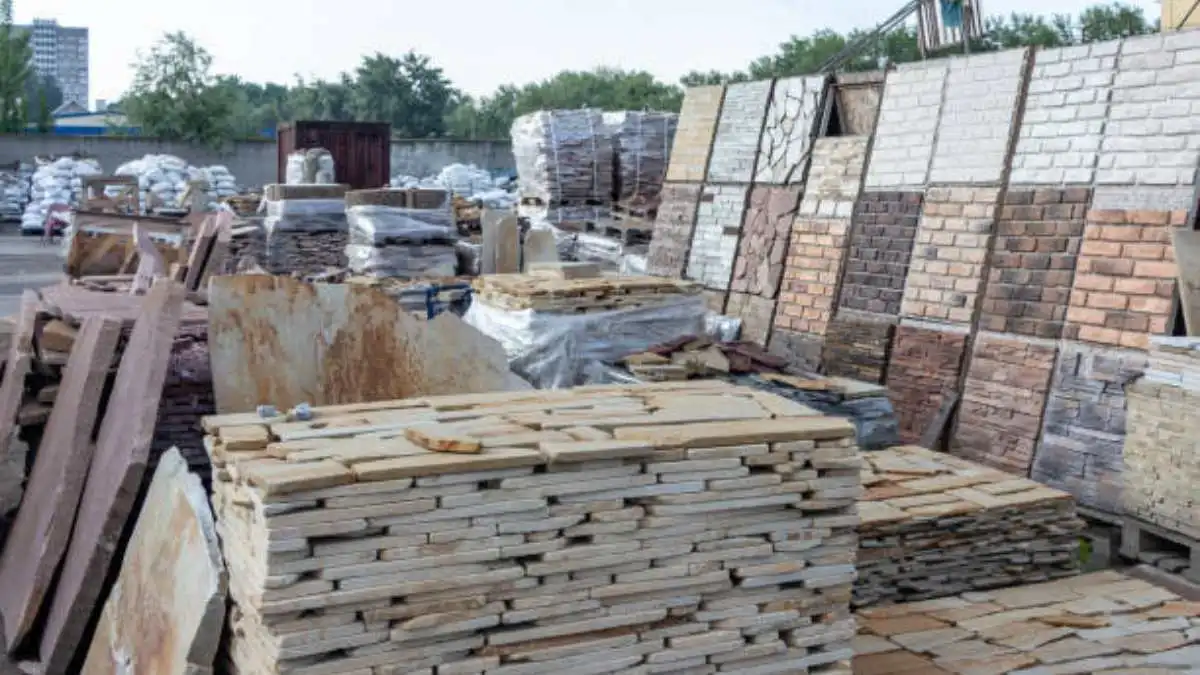HOME IMPROVEMENT
Choosing the Right Hardscape Material for Your Outdoor Project

Introduction
Whether you’re upgrading your backyard, refreshing a walkway, or building a retaining wall, one of the most important decisions you’ll make is the material you choose. The look, cost, durability, and maintenance of your outdoor space all hinge on this choice. It’s not just about style—it’s about how the space will function over time.
From concrete to pavers to natural stone, each option brings distinct benefits and considerations. While your final decision should reflect your lifestyle, climate, and design preferences, understanding the differences between materials can help you avoid costly mistakes.
Odd Jobs Landscape & Pavers works with homeowners to evaluate these material choices carefully, ensuring the finished product delivers long-term beauty and value. In this guide, we’ll explore the most common hardscape materials and how to decide what’s best for your project.
Table of Contents
Understanding Hardscape Basics
What Is Hardscaping?
Hardscaping refers to the non-living structural elements in a landscape—essentially, anything made from concrete, stone, or other solid materials. These features serve both functional and aesthetic purposes. Popular examples include:
- Paver patios and walkways
- Retaining walls
- Outdoor stairs and fire pits
- Pool decks and driveway borders
Choosing the right materials for these features can enhance usability, manage drainage, and increase curb appeal.
Concrete: The Practical Powerhouse
Pros and Ideal Uses
Concrete is one of the most versatile and cost-effective materials available. It’s often used in:
- Driveways
- Sidewalks
- Foundation slabs
- Patios and pool surrounds
Key advantages include:
- Affordability and availability
- Customizable with stamping, coloring, and finishes
- Strong load-bearing capacity
Considerations
While durable, concrete is prone to cracking over time—especially in climates with freeze-thaw cycles. Sealing can help prolong its appearance, but repairs may be more noticeable than with modular options like pavers.
Pavers: Modular and Stylish
Why Choose Paver Patios or Walkways?
Pavers are individual units made from concrete, brick, or stone that fit together to form a durable surface. They’re ideal for:
- Patios and seating areas
- Walkways and garden paths
- Driveway accents and borders
Benefits of using pavers include:
- Flexibility in design (shapes, colors, patterns)
- Ease of repair (replace individual units if damaged)
- Excellent drainage when installed with proper base materials
Paver patios, in particular, offer a polished look that’s also functional—providing traction and comfort underfoot.
Trade-Offs
Pavers are typically more expensive upfront than poured concrete due to labor and material costs. However, their long-term durability and visual appeal often justify the investment.
Natural Stone: Timeless and Organic
High-End Aesthetic and Longevity
Natural stone—like flagstone, bluestone, or granite—offers unmatched elegance and uniqueness. It’s perfect for projects where character and authenticity are top priorities.
Ideal uses include:
- Garden paths
- Outdoor kitchens
- Fire pit areas
- Retaining walls
Advantages:
- Each piece has a one-of-a-kind appearance
- Exceptional durability and weather resistance
- Elevates the luxury of the space
Challenges
Stone is heavier and more difficult to install than other materials. It also comes at a premium cost. Maintenance may vary depending on the type, especially if the stone is porous or susceptible to staining.
Brick: Classic and Durable
Best for Traditional Designs
Brick delivers a timeless look and is often used in historic or traditional landscapes. It’s great for:
- Walkways
- Edging around flower beds
- Courtyards or seating areas
Benefits:
- High compressive strength
- Low maintenance and weather resistant
- Recyclable and eco-friendly
However, brick can be less flexible in terms of color variety and may require periodic cleaning to avoid moss buildup, especially in damp or shaded areas.
Gravel and Loose Fill: Casual and Permeable
Functional Simplicity
Gravel, crushed stone, and decomposed granite are popular for informal settings and offer natural drainage. These materials work well in:
- Walkways and side paths
- Garden seating zones
- Between larger pavers or stepping stones
Advantages:
- Budget-friendly and DIY-accessible
- Fast installation and excellent permeability
- Great for erosion control or areas with water runoff
They aren’t ideal for high-traffic areas or patios where furniture stability is needed, but they can provide visual softness and drainage around more structured elements like retaining walls.
Retaining Wall Considerations
Material Matters for Structural Integrity
When building a retaining wall, your material choice affects both strength and appearance. Options include:
- Interlocking concrete blocks: Engineered for strength and drainage
- Natural stone: Adds rustic appeal and longevity
- Poured concrete: Best for large-scale or modern walls
For sloped yards, retaining walls help prevent erosion and define usable outdoor space. A landscape design that includes a retaining wall can also offer terracing and built-in seating.
Proper installation, including base preparation and drainage systems, is critical regardless of the material chosen.
How to Choose the Right Hardscape Material
Factors to Weigh
When deciding between materials, consider:
- Functionality: Will the surface handle furniture, foot traffic, or water flow?
- Style: Do you prefer modern, rustic, traditional, or eclectic designs?
- Budget: Material and installation costs can vary widely
- Climate: Some materials perform better in specific weather conditions
- Maintenance: How much upkeep are you willing to perform?
A professional landscaping company in West Bloomfield can evaluate your space and suggest a combination of materials that deliver on both form and function.
Conclusion
Choosing the right hardscape material sets the tone for your entire landscape. It influences not only how your outdoor space looks, but how it feels, functions, and lasts over time. From the sleek simplicity of concrete to the refined charm of paver patios and the organic richness of natural stone, there’s a material to suit every vision and budget.
When thoughtfully selected and professionally installed, hardscaping elements like patios, retaining walls, and walkways do more than beautify your property—they enhance its structure, usability, and long-term value.
Odd Jobs Landscape & Pavers works with homeowners to bring these spaces to life, providing expert guidance on materials, layout, and installation for lasting outdoor transformations. With the right materials and strategy, your landscape becomes a true extension of your home.
-

 GENERAL2 months ago
GENERAL2 months agoUncovering the World of кинокрадко: The Dark Side of Film Piracy
-

 GENERAL1 month ago
GENERAL1 month agoUnveiling the Art of преводсч: How Translators Bridge Language Barriers
-

 YOGA1 year ago
YOGA1 year ago4 Person Yoga Poses for Beginners
-

 GENERAL2 months ago
GENERAL2 months agoThe Journey of iamnobody89757: From Anonymous User to Internet Sensation


























